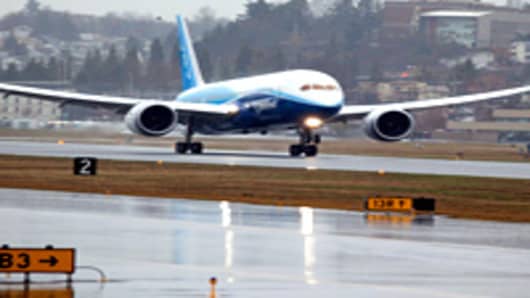While the 747-8 lacks major buzz, it's still an important plane for Boeing. One reason why: the majority of the stretched versions of the 747 ordered are for the freighter version, and freighter planes just aren't sexy.
For airlines that order the 747, the plane offers seating for up to 467 passengers and, according to Boeing, the plane will use 11 percent less fuel per passenger than its competitor, the Airbus A380. It also will incorporate some of the technology going into the Dreamliner. Like the 787, the first 747-8 is scheduled for delivery later this year.
Military Refueling Tanker
Talk about a story that seems like it will never end. Like a good novel, it's had a little bit of everything: A falling out between long time partners (Boeing and the Pentagon); the lingering stain of scandal (remember, Boeing's reputation in Washington was trashed after the company's former CFO was thrown in jail when it was learned the company got preferential treatment on military contracts in exchange for an Air Force procurement officer getting a future job at Boeing); and a dose of patriotic fervor as Boeing battles Airbusparent EADS for the contract.
All of this explains why the refueling tanker story seems to go on and on. But the Pentagon says it will decide who wins the contract by November.
And a lot is at stake. At least $35 billion for 179 refueling tankers. But it goes beyond money. For Boeing, winning the tanker would mean holding a major military plane project at a time when there are fewer of those out there.
So, for the military side of Boeing's business, this is the big enchilada. It's a contract Boeing won, then lost, and now has a chance to win again. Will Boeing get the storybook ending that comes with every great novel or will the company fall short on one of the biggest Defense Department deals to come along in years?




